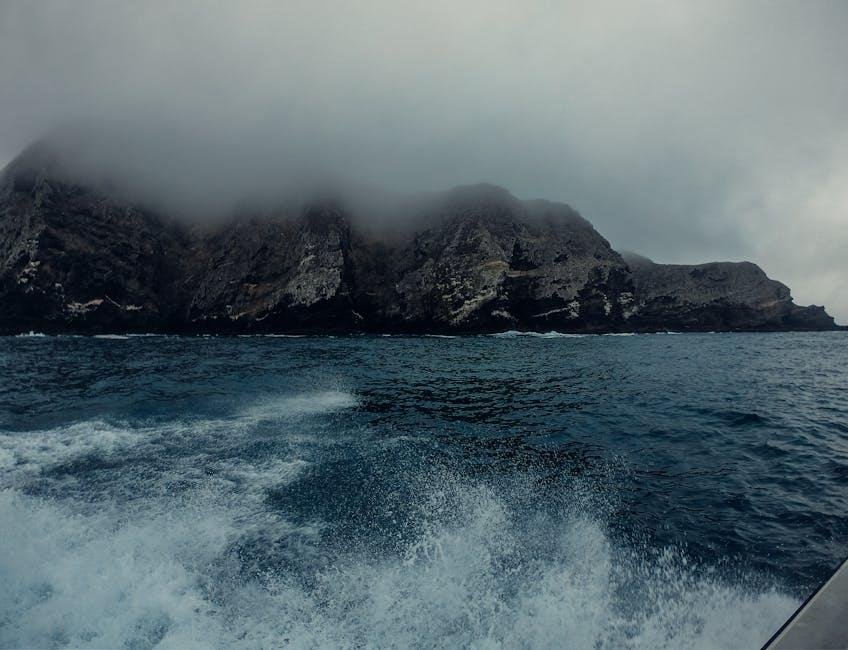In the vast expanse of the Central North Pacific, where weather patterns often dance with fierce energy and unpredictability, the calm currently settling over the CPHC Central North Pacific Wallet 3 is both notable and serene. As of now, no active storms churn within this particular zone, offering a rare moment of quiet in a region typically marked by tempestuous activity. This lull invites us to explore the significance of a storm-free snapshot, its implications for meteorologists, mariners, and the wider Pacific community, and what it might suggest about the atmospheric rhythms at play in this dynamic oceanic corridor.

Current Weather Overview in CPHC Central North Pacific Wallet 3
Key factors contributing to the current stable environment include:
- High atmospheric pressure dominating the region, suppressing storm development
- Sea surface temperatures remaining within typical seasonal ranges
- Absence of strong wind shear, which often disrupts storm formation
| Parameter | Current Value | Normal Range |
|---|---|---|
| Wind Speed | 8 knots | 5-12 knots |
| Sea Temperature | 27.2°C | 26-29°C |
| Atmospheric Pressure | 1018 mb | 1015-1020 mb |

Analyzing Atmospheric Conditions Behind the Calm Storm Activity
The absence of storm activity over the CPHC Central North Pacific Wallet 3 is a fascinating reflection of several key atmospheric dynamics working in unison. Strong high-pressure systems have stabilized the region, creating a persistent subsidence that suppresses vertical cloud development. Simultaneously, cooler sea surface temperatures-below the typical threshold for cyclogenesis-limit the energy available to fuel storm formation. These combined factors establish a tranquil environment where typical storm genesis encounters natural resistance.
Understanding this atmospheric equilibrium requires attention to variables often overlooked:
- Upper-level wind shear: Elevated wind shear disrupts cyclone organization, impeding storm intensification.
- Humidity levels: Reduced mid-tropospheric moisture curtails convective activity vital for sustaining storms.
- Oceanic heat anomalies: Absence of significant warm water pools diminishes thermal energy influx.
Together, these forces weave a delicate balance where the sky remains calm, eloquently illustrating nature’s complexity in modulating storm activity.
| Atmospheric Factor | Current Condition | Impact on Storm Activity |
|---|---|---|
| Sea Surface Temperature | 23°C (below average) | Insufficient heat energy |
| Wind Shear | High (20-30 knots) | Disrupts storm structure |
| Humidity | Low (40-50%) | Limits convection |

Potential Indicators for Future Storm Development in the Region
Several meteorological elements play a vital role in anticipating the emergence of new storm systems in the region. Enhanced sea surface temperatures above 26.5°C act as a primary energy source, fueling storm intensification. Additionally, a combination of low vertical wind shear and moist mid-level atmospheric conditions can significantly increase the potential for tropical cyclogenesis. Monitoring these factors allows meteorologists to identify zones where disturbances might organize into powerful storm formations.
Other critical indicators include atmospheric pressure anomalies and the presence of atmospheric waves such as the Madden-Julian Oscillation (MJO). These elements can enhance convective activity and increase the likelihood of storm genesis over a span of days to weeks. Below is a concise overview of key parameters often observed:
| Parameter | Indicative Conditions | Impact on Storm Development |
|---|---|---|
| Sea Surface Temperature | > 26.5°C | Supports storm formation and intensification |
| Vertical Wind Shear | < 15 knots | Favors storm structure maintenance |
| Mid-Level Humidity | High (> 60%) | Enhances convection |
| MJO Phase | Active phase over region | Increases storm probability |

Preparedness Strategies for Mariners and Coastal Communities
Mariners should maintain a proactive stance even when the seas are calm. Continuous monitoring of weather updates, coupled with ensuring that all navigational and safety equipment is in optimal condition, is crucial. Before heading out, creating and sharing detailed voyage plans including estimated routes and timelines can significantly enhance response efficiency in the event of sudden weather changes. Additionally, familiarizing crews with emergency protocols and conducting regular drills prepares everyone aboard for unexpected situations, reducing panic and improving coordination.
Coastal communities stand to benefit greatly from integrated preparedness efforts that combine information dissemination and localized response strategies. Establishing accessible communication channels such as community apps or alert systems ensures vital weather information reaches residents promptly. Key action points include:
- Clear evacuation routes: Regularly updated and well-marked paths help residents move quickly and safely when necessary.
- Community engagement programs: Workshops and drills enhance public awareness and readiness.
- Emergency supply kits: Encouraging preparation of essential supplies minimizes vulnerability during disruptions.
| Preparedness Element | Key Actions | Benefit |
|---|---|---|
| Real-time Weather Updates | Use apps & radios | Informed decision-making |
| Emergency Drills | Conduct quarterly | Improved readiness |
| Evacuation Planning | Regular updates & signage | Faster, safer evacuations |
The Conclusion
As the skies over the Central North Pacific remain calm and clear, the absence of any current storms in the CPHC area offers a moment of quiet reflection amidst a season usually marked by uncertainty. While nature’s moods can shift unexpectedly, for now, this spell of tranquility provides a valuable pause-an opportunity to prepare, observe, and appreciate the vast ocean’s ever-changing dance. Stay informed, stay ready, and let this calm be a reminder of the balance between stillness and storm in our world’s weather rhythms.

